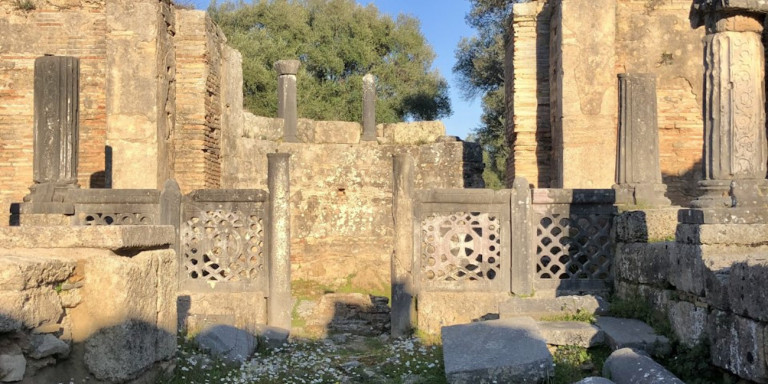Greece’s Central Archaeological Council (KAS) has approved the restoration of the workshop of iconic ancient sculptor Pheidias in Ancient Olympia. Pheidias, who lived from approximately 480 to 430 BC, who was also a painter and architect, is the creator of the Statue of Zeus at Olympia, one of the Seven Wonders of the Ancient World.
The brilliant polymath also designed the statues of Athena Parthenos inside the Parthenon on the Acropolis, and the Athena Promachos, a colossal bronze at the Propylaea. The restoration of the workshop of Pheidias, which later was transformed into the Early Christian Basilica of Olympia, was approved by the KAS as part of the program to highlight the Roman phase of the archaeological site of Ancient Olympia.
Minister of Culture and Sports Lina Mendoni said in a press release that visitors will spend more time at Olympia after the restoration because of this highlighting of the Roman phase of the history of the site.
“The highlighting of the buildings of the Roman period – in addition to the protection of the monuments themselves – will give an extremely interesting picture of the archeological site of Olympia. This will significantly increase the stay time of visitors. Today, most visitors limit their tour to the area of the sanctuary with the classical antiquities. With the completion of the program of highlighting the Roman phase of the Sanctuary of Ancient Olympia, the image of the archaeological site is expected to change radically, offering the visitor a more complete experience of the site and the different time periods, as reflected and presumed in the monuments of Olympia.”
The location of the building that housed Pheidias’ workshop in Olympia has been identified by researchers, who also presume its continuous use from the classical to the Byzantine era. Its history and elements discovered by German excavators certify the presence of the great sculptor there. The study, organized and funded by the German Archaeological Institute, aims at the complete protection of the monument and the wider area.
The restoration proposal is to present the Byzantine building inside the building based on the elements it has from each phase as well as the architectural qualities that express individual elements of each phase.
The Central Archaeological Council, approving the study for the restoration of the early Christian phase, requested that the Classical phase of the building be highlighted to a greater extent, both internally and externally, in order to document all the surviving authentic material of the classical times.
The monument has been fully documented: All the stones from the south pillar, as well as the floor stones and other parts of the monument are kept in the Museum. In total, 160 architectural pieces were documented, while on-site measurements were made using modern and traditional methods.
Pheidias’ workshop is located in the very center of the archeological site of Olympia. The history of the monument begins in the classical era, in the third quarter of the fifth century BC, when Pheidias, after his work on the Acropolis of Athens, came to Olympia to build the statue of Olympian Zeus.
The building was autonomous originally. The Statue of Olympian Zeus was a colossal, seated figure of the god Zeus, approximately 13 meters (42 feet) high. It was sculpted by Pheidias around 435 BC and placed inside the Temple of Zeus, in the Sanctuary of Olympia.
It was one of the most magnificent monuments ever to be constructed in antiquity and was among the Seven Wonders of the World, until its final loss and destruction in the fifth century AD. Over time, and during the Hellenistic era, smaller and larger buildings were gradually added in the immediate vicinity of the workshop, which finally ended up being part of a large building complex.
These buildings did not have the monumental character of the workshop. During the late Hellenistic period, between the 2nd century BC and 1st century AD, large-scale changes took place in the surrounding area of the workshop building.
During the Roman era, great changes took place not only in the building, but also in the surrounding area. Only the original layout of the building with the foreground and the main hall remained unchanged.
During the Byzantine era, between 435 and 451 AD, the most important building to be erected during those times, the imposing Christian church, was built on the ruins of the workshop. The building type of the early Christian basilica was easily adapted to the rectangular shape of the existing building. The Basilica of Olympia is considered the oldest known early Christian church in the Ilia area.
Even though the excavations have provided important data, they brought about large-scale alterations of the early Christian phase. As can be seen from the observation of old drawings and photographs, many elements of the church were sacrificed to facilitate the research. However, the documentation of the Byzantine elements by the older researchers and excavators, as early as 1877, allows for the correct restoration of the monument.


2 comments:
Thanks for sharing this.
ยูฟ่า239
Amazing post you have published here.
บาคาร่าบนมือถือ
Post a Comment